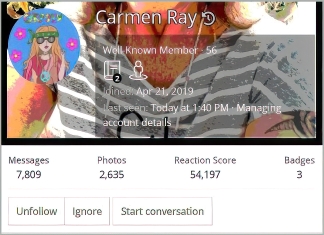Many states are legalizing or have already legalized marijuana, and the industry is booming. In fact, the marijuana industry is expected to reach $146.4 billion worldwide by 2025. Naturally, many entrepreneurs and startup founders are jumping in on the trend.
However, just because the industry is hot does not guarantee success. Like in any field, business owners and entrepreneurs in the marijuana industry need a solid marketing strategy to succeed. They also need a deep understanding of both the industry and the consumer: Though legalization of marijuana may be recent in some states, it is already an established lifestyle for many consumers.
How can cannabis business owners navigate the legal and lifestyle trends around marijuana and create a successful social media marketing strategy?
Set Clear Goals
Before you begin posting on social media, figure out what your ultimate goal is. This is particularly important for cannabis businesses, which may be geographically limited or face additional challenges if marketing across state lines. Different goals could include raising brand awareness, accessing new consumers, enticing existing consumers to try a new product, conducting data discovery on your audience or increasing sales. Once you’ve set those goals, you can attach clear numbers or benchmarks to them, monitor your progress and analyze the results.
Standardize Your Messaging
In the cannabis business, it’s critical to have clear messaging and branding. This is in the best interest of both your consumers and your business. In such a burgeoning industry filled with competitors, you and your social marketing team need to plan out exactly how you stand apart from the crowd, and how you’ll communicate that with consumers. In other words, how are you adding value to your consumers’ lives? Given that many of them might already be well-established cannabis consumers, how will you offer them something unique that they need? Once you have established the differentiators, get specific with the language and messaging you use to refer to these in your social media feeds and communications in general.
This kind of specificity may not sound like a priority, but without a very clear idea of what your brand messaging is, it’s very easy to use contradictory phrasing and/or unclear language that serves only to confuse your customer base and erode trust in your brand and in your product.
Plan Your Content Calendar
Once you’ve pinned down your brand, you need to generate actual content. First, you should plan the content itself, whether images, videos, blog posts, memes or all of the above. This could be either original content that you create yourself, or user-generated content from influencers or regular consumers that are using your product and posting about it on social media. User-generated content gives you an advantage in that someone else is doing the advocating for you, which may be seen as more genuine. However, it may be lower quality or not in line with your overall design or aesthetic. Your business could also target a mix of both types of content, starting with original content and sharing user-generated content as your company gains traction.
One tip for choosing visual content is to add human element to it. At StickerYou, our product (custom stickers and other sticky products) is very visual, and we place a heavy emphasis on visuals in our content calendar. We have noticed much higher levels of engagement when there is a “human element” included in the images. For example, a hand holding a roll of labels, a person wearing a shirt with an iron-on on it, or an arm bearing a temporary tattoo.
Harvest The Data
It’s critical to stay on top of your data the moment you start posting on social media. This can include any number of metrics, such as likes, comments, reposts, traffic, new followers and data about your audience demographics. Collecting data will help you figure out what performs well and what doesn’t so that you can refine your content as you form a clearer picture of what your target audience should be. You may have had an idea of your typical consumer before you started posting – in fact, it’s a necessary step when planning your content – but the raw data will give you a much better sense.
Stay Relevant
In such a rapidly expanding industry, new trends will constantly emerge to match consumer demand. More states are on track to legalize or decriminalize marijuana, and it’s likely that the role of cannabis in different functions like medicine or recreation will only grow. Be sure to watch what your competitors are doing on social media and keep monitoring your data to see what direction you should take your content in. Staying engaged with your consumers and the audience of the marijuana industry as a whole will help you jump in on conversations as they are starting. It can also help guide not only what you post, but also what your company should be selling in general.
Cannabis owners should be as strategic about social media as any other company. However, they face additional challenges from being a part of such a new and expanding industry. By making a well-laid plan for your content and constantly adjusting it based on real-time data and feedback, you put your cannabis business on the track to success.
Author Bio: Andrew Witkin, Founder & President
As the founder of StickerYou, Andrew believes in the enormous power of customization. With over a decade of StickerYou success, he is one of Canada’s leading experts in e-commerce, customization, startups, marketing and the tech economy.
He is a graduate of Dalhousie University and holds an MBA from the Schulich School of Business, York University. Witkin has previously served as VP North American Licensing for Nelvana/Corus Entertainment and Director of Marketing for MegaBrands/Mattel.














